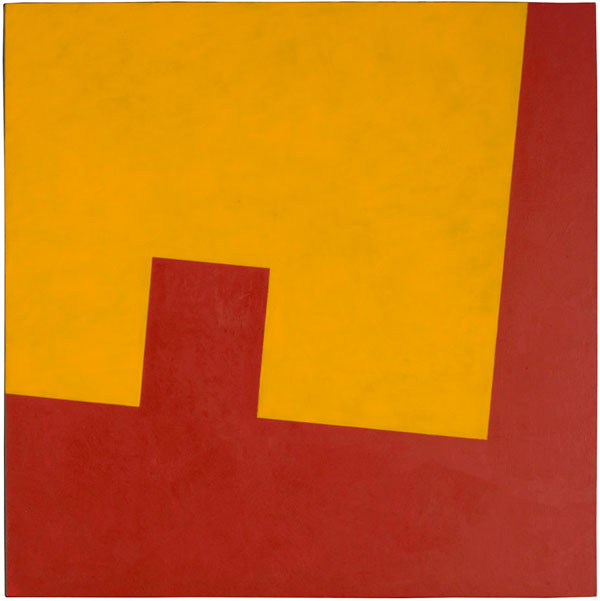“concrete is history / basic is the present.” That is the beginning of one of Diet Sayler’s many texts which – even if they veer to and fro between manifesto and poetry – are of a clarity that fully matches the clarity of his artistic work. With supreme assurance Sayler looks back on the history and tradition of concrete art and from this formulates with a fervour the basis for a contemporary œuvre that is abreast of the times, and which essentially from the 1960s till now has received far too little attention. Because Sayler is one of the few artists to have succeeded in restricting themselves to extremely reduced basic elements and nevertheless to come up with a wide variety of artistic forms: on the small and the large scale, directly on walls, in museums and in public space. The basic elements that Sayler uses in varying forms and colour constellations are strictly geometrical, and yet the artist does not wish to be understood as objective in the sense of Concrete Art. Instead he develops his “own personal subjective grammar of geometry” in which the constructivist aspect is of no less importance than intuition and chance.
Sayler’s painting “Kutná Hora” from 2006 shows how this is to be understood. Set on a square surface, two colour zones can be seen colliding with one another – the one in orange, the other red. Like two Tetris figures the two zones interlock, even if they are also slightly tilted from right angles to the picture surface. Just how intuitively the picture has been approached can be seen from the title of the work. Time and again the artist links his abstracts with remarkable places and towns: with “Mondovi” (1998), “Capodimonte” (2002), “Taormina” (2004) or, as in this case “Kutná Hora”, a small Czech town with an old town that is a UNESCO World Heritage site. Each one of these works is done as a reminiscence of the place in question. The locations are unavoidably present in the paintings, even if they do not appear as such. And it is precisely in this that Diet Sayler leaves the objectivity of concretion far behind so as to open up totally new vistas that allow memory and intuition to move freely. (Ralf Christofori)
Diet Sayler
1939 born in Timişoara (RO)
Lives and works in Nuremberg


